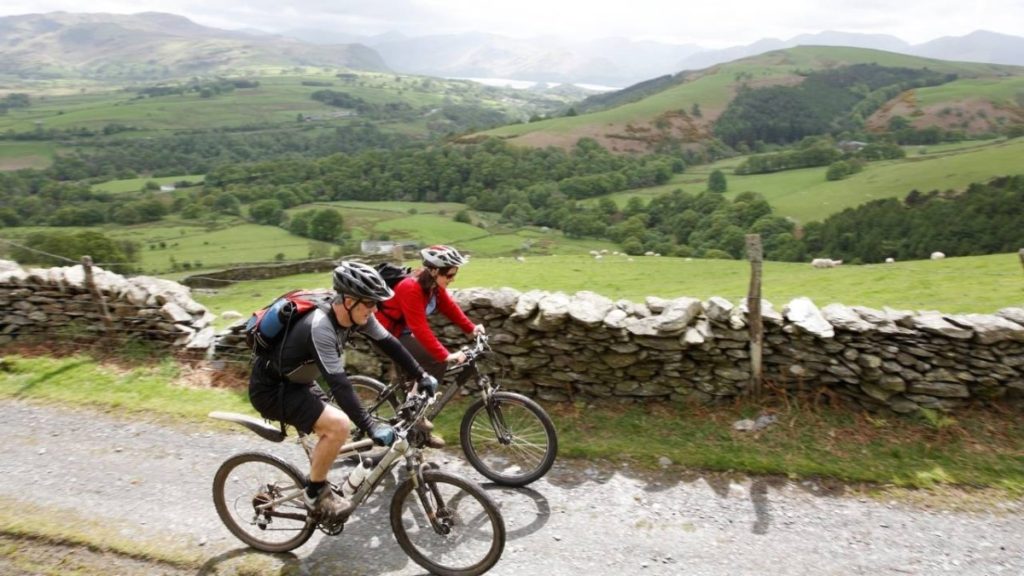
Cycling is a great way to get around, and it’s also a great form of exercise. Cycling can help you stay in shape, lose weight, and improve your overall health. In addition, cycling is a very affordable mode of transportation.
Cycling is not only great for your physical health, but it’s also great for your mental health. Cycling can help reduce stress, anxiety, and depression. In addition, cycling can help improve your mood and mental well-being. Furthermore, it is one of my favourite ways to get outside and enjoy the fresh air.
Table of Contents
What is the Average Time to Cycle 5km?
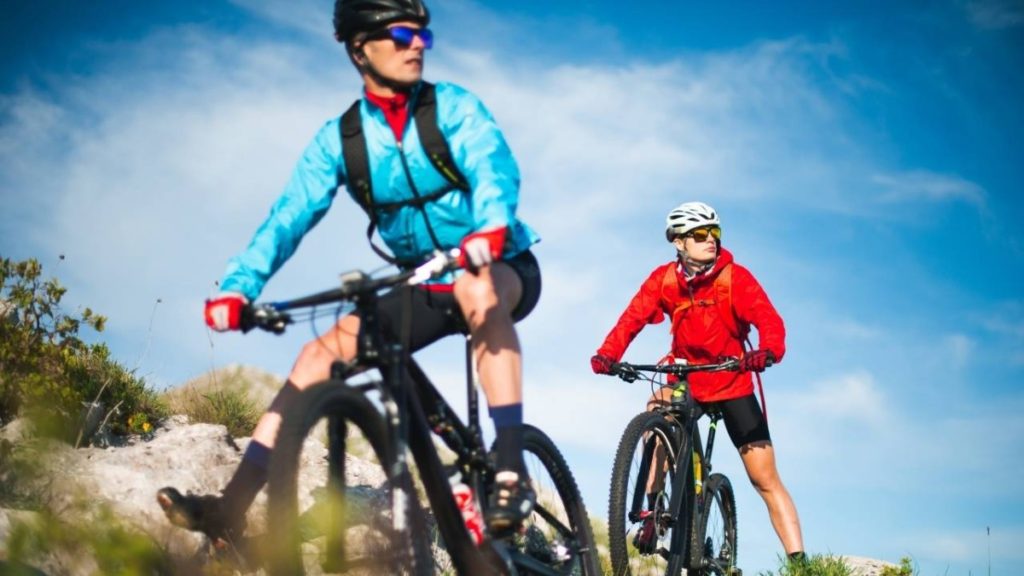
A person with an average level of fitness can cycle 5km between 12 minutes and 17 minutes. The average time for a male aged 20-40 is around 12 minutes. For a female, it is 15 minutes. For an advanced cyclist, an average 5km time is around 9 minutes.
However, you have to consider the type of bike you are riding because this can make a significant difference to your times. Typically a road bike is the fastest type of bike and is the easiest to clock up mileage. A hybrid bike is usually slower than a road bike but is still fast, especially on flat smooth surfaces like the highway.
A mountain bike or standard bike is the slowest because it has a thick wheel which creates a large surface area making it slower due to friction, and they are generally heavier than road or hybrid bikes. A good estimate is that a road bike is typically 10% faster than a mountain bike which could be 2 minutes or more.
The terrain has a huge impact on your average time. If you are cycling on a flat road, then you will be able to maintain a higher average speed than if you were cycling on a rugged mountain trail. Off-road is harder to cycle than on roads and highways, and you can see a 50% time difference from off-road to the road when cycling.
Therefore, these average times are estimated for a standard road bike on a road surface. If you have a mountain bike or hybrid, add 10% to these times and if you cycle off-road, then add more time for the terrain. The harder the terrain, the more time you will need to add.

Average Time to Cycle 5km Males
On average, it takes a male between 12 minutes and 14 minutes to cycle 5km. However, it depends on their age, weight and overall fitness levels. For instance, a male that is aged between 25-29 can expect a 5km cycling time of 12 minutes. For a male that is aged 40-44 can expect around 13 minutes.
| AVERAGE TIME TO CYCLE 5 km | |||
| AGE | Beginner Level | Intermediate Level | Advanced Level |
| 15-20 | 00:10:00 | 00:09:00 | 00:08:05 |
| 20-25 | 00:10:10 | 00:08:55 | 00:08:00 |
| 25-30 | 00:10:00 | 00:08:45 | 00:07:55 |
| 30-35 | 00:10:25 | 00:09:15 | 00:08:15 |
| 35-40 | 00:10:35 | 00:09:35 | 00:08:25 |
| 40-45 | 00:10:40 | 00:09:45 | 00:08:30 |
| 45-50 | 00:11:05 | 00:09:55 | 00:08:45 |
| 50-55 | 00:11:30 | 00:10:05 | 00:09:10 |
| 55-60 | 00:12:00 | 00:10:35 | 00:09:30 |
| 60-65 | 00:12:30 | 00:10:55 | 00:09:55 |
| 65-70 | 00:13:00 | 00:11:25 | 00:10:20 |
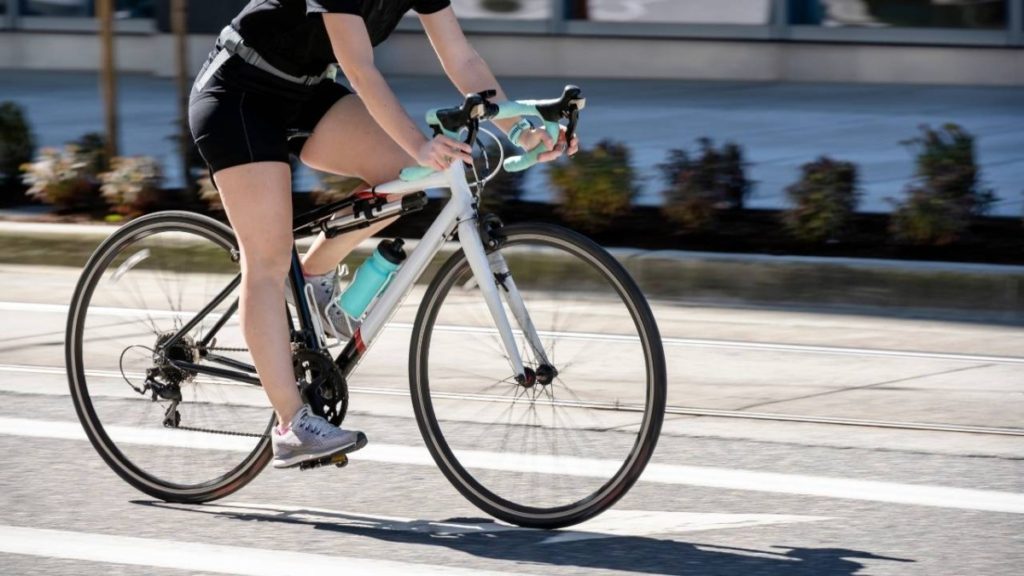
Average Time to Cycle 5km Females
On average, it takes a female between 14 minutes and 17 minutes to cycle 5km. However, it depends on their age, weight and overall fitness levels. For instance, a female that is aged between 30-34 can expect a 5km cycle time of 15 minutes. For a female that is aged 45-50 can expect around 16 minutes.
| AVERAGE TIME TO CYCLE 5 km | |||
| AGE | Beginner Level | Intermediate Level | Advanced Level |
| 15-20 | 00:12:40 | 00:10:55 | 00:09:45 |
| 20-25 | 00:12:35 | 00:10:50 | 00:09:40 |
| 25-30 | 00:12:25 | 00:10:40 | 00:09:30 |
| 30-35 | 00:12:45 | 00:11:05 | 00:09:50 |
| 35-40 | 00:12:50 | 00:11:20 | 00:09:55 |
| 40-45 | 00:12:55 | 00:11:35 | 00:10:00 |
| 45-50 | 00:13:25 | 00:12:10 | 00:10:20 |
| 50-55 | 00:14:05 | 00:12:30 | 00:10:50 |
| 55-60 | 00:14:55 | 00:12:50 | 00:11:25 |
| 60-65 | 00:15:50 | 00:13:35 | 00:12:10 |
| 65-70 | 00:16:50 | 00:14:30 | 00:12:55 |
Generally, males are faster at cycling than females because they have more muscle mass and a lower body fat percentage. However, as the distances get longer, females have greater endurance and can actually outperform males who are regularly training.
But ultimately, its fitness level has the biggest impact on your average time to cycle 5km. A person that is very fit will be able to do it faster than someone who is not as fit, regardless of their gender. The only way to improve your cycling times is regularly cycle and train. Your weight is another factor to consider because a lighter person will be able to cycle faster than a heavier person.
Other Cycling Articles you Might Find Helpful
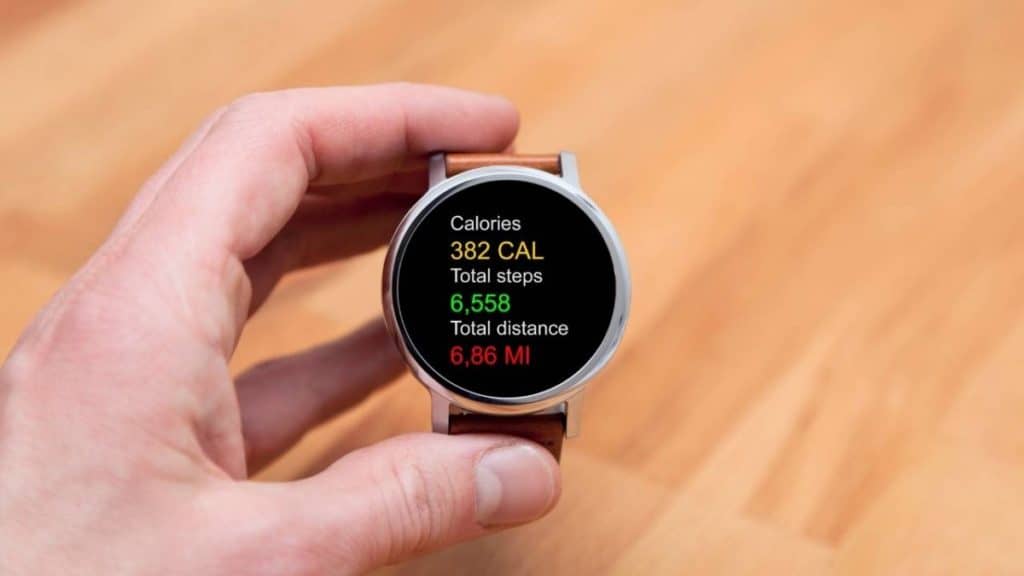
How Many Calories Do You Burn Cycling 5km?
On average, if you cycle 5km at a moderate pace at a speed of 19kph-30kph, you can expect to burn around 170 calories. The number of calories you burn cycling 5km will depend on your weight, gender and pace. A person who weighs 180 pounds and bikes 5km in 12 minutes will burn about 165 calories. A person who weighs 220 pounds and cycles 5km in 12 minutes will burn about 200 calories.
| Weight (pounds) | Calories Burned for cycling 5km |
| 160 | 145 |
| 170 | 155 |
| 180 | 165 |
| 190 | 170 |
| 200 | 180 |
| 210 | 190 |
| 220 | 200 |
| 230 | 210 |
| 240 | 225 |
| 250 | 240 |
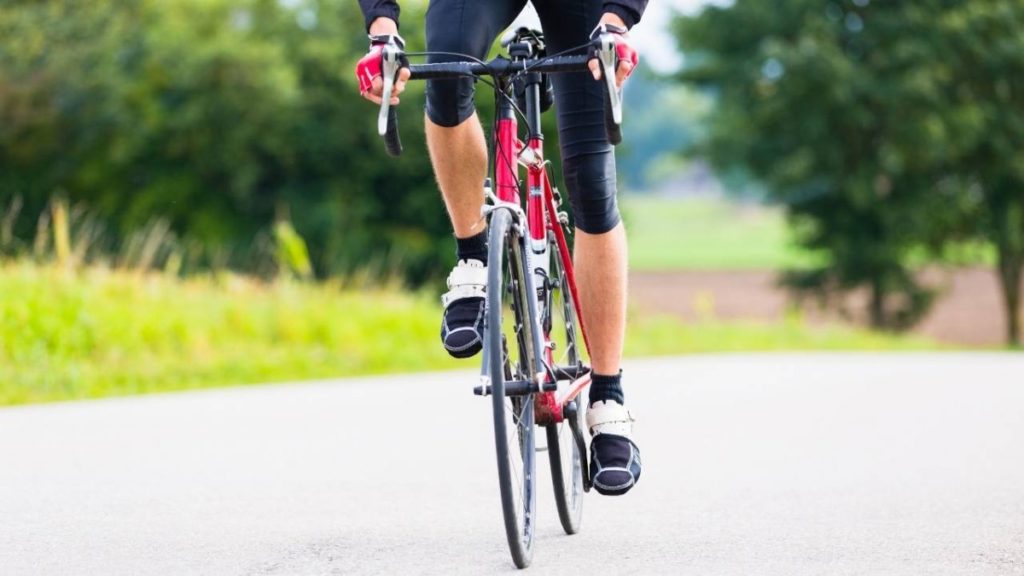
Can You Cycle 5km Every Day?
Yes, you can cycle 5km every day, but you need to make sure that you do not overtrain. This is because if your body does not have time to recover, then it will start to break down muscle tissue. It is recommended that you take a rest day every 3-5 days. This will give your body time to repair and rebuild any damaged muscle tissue.
If you are new to cycling, then you should start off slowly and gradually increase your distance and pace. For instance, you could cycle 5km 3 times a week for the first week and then increase it to 4 times a week the following week. You should also make sure that you warm up before you start cycling and cool down afterwards. This will help to prevent any injuries.
How To Improve Distance And Speed For Cycling?
Cycling is a pretty simple sport as far as physics is concerned. It’s all about weight, resistance, and strength. Approaching your goals of speed and distance should be approached slightly differently.
Here are some tips to help you improve your overall distance so you can clock up high miles on your bike.
1. Sprint Training
First, let’s look at improving speed in the capacity of sprinting a short distance on the bike. When you’re doing this, there are a few things to consider:
–neuromuscular recruitment: the ability of your nervous system to fire muscle groups quickly and efficiently
– anaerobic capacity: the amount of energy you can produce without oxygen
– lactic acid threshold: how much lactic acid your muscles can produce before it starts to affect your performance
To improve your anaerobic capacity and lactic acid threshold, you need to do high-intensity interval training (HIIT). This type of training involves going all out for a short period, followed by a recovery period, and repeating this process several times.
Let’s begin with 1km. First, try to max out your cycle speed for that 1km, then for the next 1 km, reduce your speed to what you’re comfortable with. Repeat this step over and over every time you cycle, and you’ll be building a lot of body strength that will go a long way to improving your cycling speed and skill.
Next, work up to 5km. You’ll want to push your average speed higher and higher each time you attempt the 5km route, and this will involve a fair amount of muscle conditioning and training and, of course, pain. The fastest way to improve your speed on the bike is to build a sprint-based training routine that pushes your body to increase the average speed.
You’ll want to find similar weather and road conditions and cycle at the same time each day to gauge your improvement. Obviously, cycling at midnight with no traffic is going to be considerably faster than cycling at peak hours in a dense urban environment.
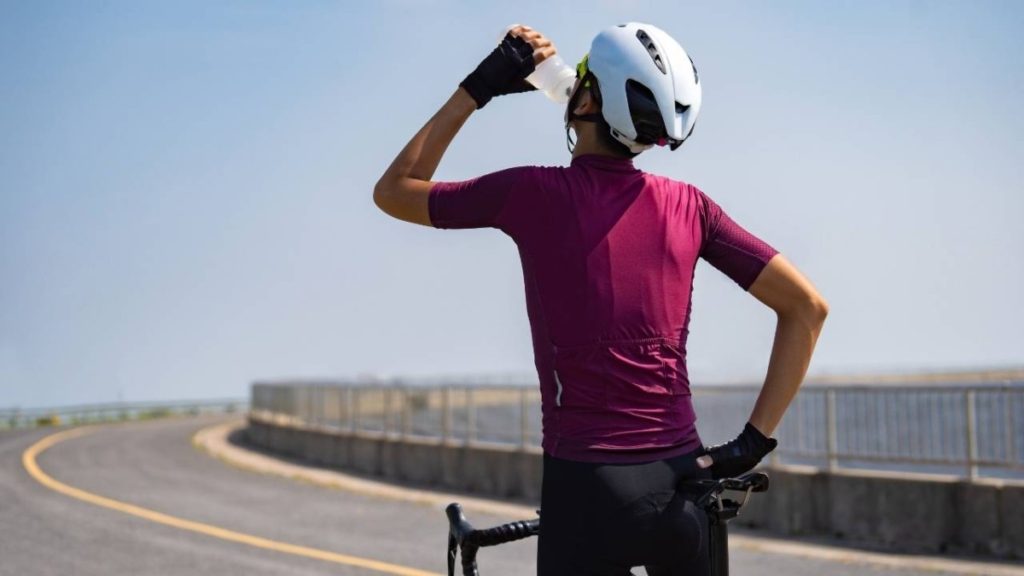
2. Fuel Up And Regularly Stretch
You’re going to want to warm up your muscles correctly if you’re planning on doing any type of strength or distance training on the bike, so incorporate at least 10-15 minutes of stretches before and after your cycle.
Focus on the hamstring, quads, thighs, back and shoulders. Don’t forget some neck stretches and movement exercises, too, as a long time in the saddle impacts your entire body. Make sure you refuel with an electrolyte replenishing drink or a similar sports drink, and if you’re going long distances, have some slow and fast-releasing energy foods to keep you focused and energised.
3. Double Up The Distance
OK, so you’ve got your top speed up to around 20-25km/h, and you’re really beating the 5km route. The next step is to improve the distance that you’re cycling. The easiest way is to double your 5km route to 10km and maintain your new top average speed.
You’ll find this will be challenging at first, but within a few weeks, if you cycle every day, your muscles will be conditioned to the new 10km distance.
4. Explore More Challenging Terrain
By far, one of the easiest ways to improve your speed and distance cycling is to cycle on varied terrain. Doing a few short ascents along with bursts of downhill and sprint cycling will not only improve your cycling ability on flat terrain but will also significantly improve your fitness and overall health. Cycling varied terrain and making day trips cycling to new areas and towns is one of the many joys of cycling and is really something to look forward to in your cycling fitness goals.
Are you regularly cycling the same distance as your daily commute to work? OK, so why not try doing more the next time or visiting friends at the weekend? Instead of admiring the mountains from a distance, why not cycle out to them and check out the new terrain?
5. Join A Cycling Club
Cycling isn’t only about pushing your personal goals and fitness levels. It’s also an incredibly social sport that is ideal for all ages and skill levels of cyclists. Joining a social cycling club is a great way to meet people with similar interests and offers exciting ways to expand your cycling skills and knowledge of the area.
Many cycling clubs also offer social rides, competitions, events, and cycle holidays to explore new areas, states, or even countries. Can’t cycle in Michigan state in the winter?
Why not hit up Malta or a Mediterranean island for a bit of cycle tourism while improving your tan?! Sounds good, right! There are so many exciting places to explore, and the only way to do it is to get on your bike and ride!



